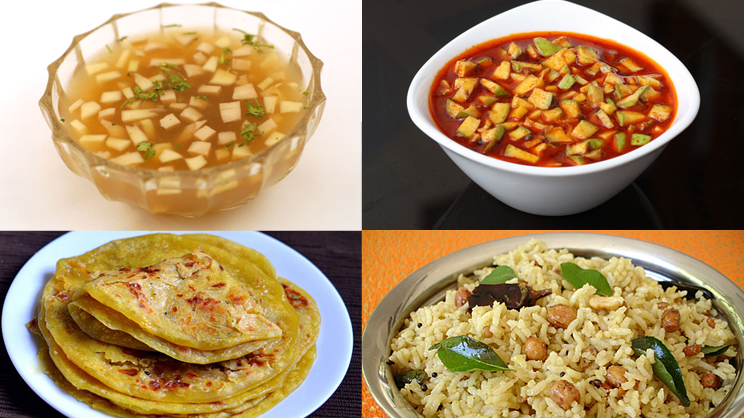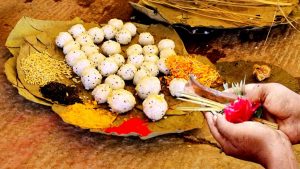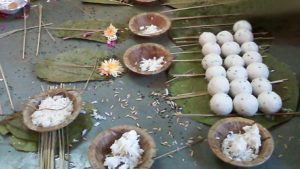Ugadi Festival (28th / 29th March 2017)
Ugadi is one of the prominent festivals celebrated in India, more particularly in the South Indian states of Andhra Pradesh, Telangana and Karnataka. It signifies the beginning of the New Year in these states. The festival is locally known by the name “Telugu Panchang”and “Kannada Panchang”, in Andhra Pradesh and Karnataka respectively. Ugadi is derived from two words namely, ‘Yuga’ meaning ‘era’, and ‘aadi’ meaning ‘the beginning’. This popular festival is usually celebrated in second fortnight in month of Phalguna according to the Hindu calendar. The period between mid March and early April is counted as the Phalguna month.
Maharashtrian observe this day as ‘Gudi Padwa’. Ugadi is regarded as the day when Lord Brahma, the divine creator, is said to have formed the universe. It is also that time of the year when winter nears the end, while spring season is about to begin. Spring is the most fertile season of the year when plants begin to flower. Thus this season can be compared with this day of Ugadi when the people are about to start their new year.
Celebrations of Ugadi
Preparations for the festival start well in advance. People get ready to welcome the New Year by cleaning their houses and by buying new clothes for themselves and their family members. They also purchase other essentials needed for the festival celebrations.
On the day of Ugadi, people traditionally wake up quite early, even before the dawn. They usually apply sesame oil all over their body and have a neat oil massage, before going on to have a Bath. There is a list of rituals that are followed on this day.
People clean the entrance of their houses with water mixed with Cow dung. This is because cow dung us regarded as an amazing antiseptic which prevents germs from entering the house. They make colourful floral designs called Rangoli, which adds to the festive mood. This is a very common sight in most households in the states of Andhra and Karnataka. Various rituals are performed on Gods, to seek their divine blessings before starting off with the New Year.
The Sun God is worshipped next, before accepting Vepapoota Pachadi (Neem Flower Pickle) on an empty stomach. The entrances of the houses are decorated with fresh mango leaves which signify auspiciousness. This is also the reason why mango leaves and coconuts are used in the form of a Kalasam, to initiate holy poojas.
The members of the family gather together to offer their prayers to the almighty and to seek his divine blessings in the auspicious occasion of Ugadi. Special Feast is prepared for the day, which forms an important part of the celebrations.
Ugadi Festival Food

A variety of dishes are prepared as part of the special Ugadi feast. One such dish is the popular Ugadi pachadi, which is a must for everyone to eat on this day. This dish is known by the name “Bevu Bella” in Karnataka. This dish is a blend of sweet and bitter which symbolises that the New Year which just begun, would be a mixture of both happy as well as sad moments. It also signifies the basic rule of life, where a person would go through both good as well as bad phases in his life and hence one has to learn to manage living with both. The above concept is the basis for the preparation Ugadi pachadi on his auspicious day. The recipe is a mix of jaggery and neem leaves, where the neem leaves imparts the bitter taste, while the jaggery makes it sweet. Tasting of this Ugadi Pachaddi is a compulsory practise, which must be followed by everyone on this occasion. This serves as a reminder to everyone that everything in life is temporary, be it good or bad.
Most households that celebrate the festival of Ugadi, prepare various other dishes, apart from the Ugadi Pachadi, as part of the festive feast. These include bobbatlu / holige, puliogure or the pulihora.
One another recipe that typically symbolises this joyous occasion, is the pickle that is prepared from mango and tamarind. Mangos are available in abundance usually around at this time of the year. Thus this is the ideal time for preparing the maango pickle, which is liked by majority of people in India. The picky preparation includes adding together the ingredients like the tamarind, raw mango, chilly powder, mustard powder, salt, and oil, which is used in moderation. This preparation is popularly referred to as the “Avakai pickle”.
Reach us to be a part of our whatsapp spiritual reminder group







